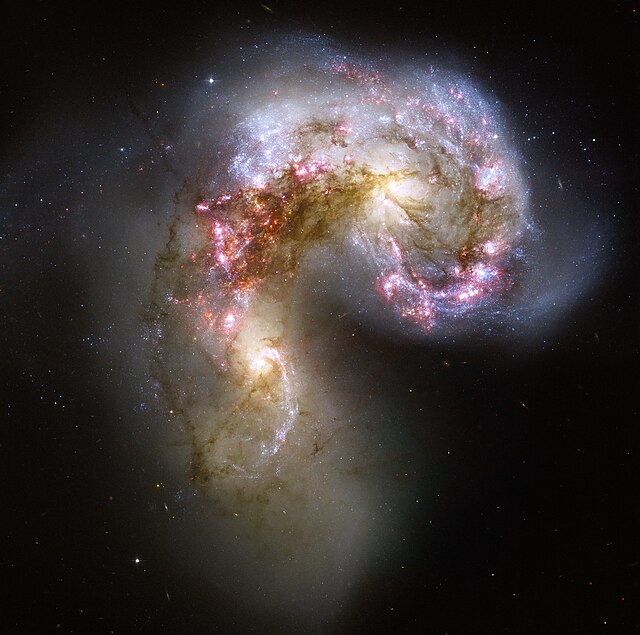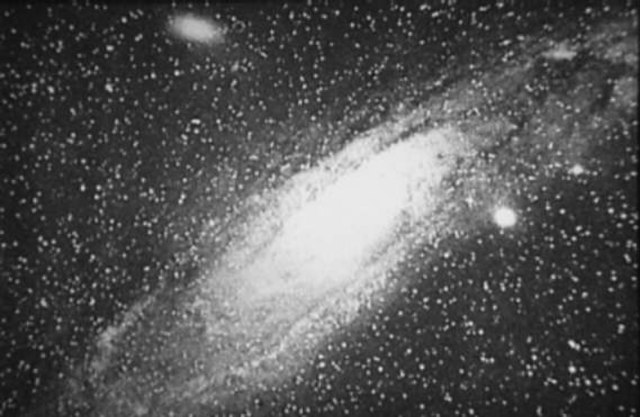Galaxy formation and evolution
The study of galaxy formation and evolution is concerned with the processes that formed a heterogeneous universe from a homogeneous beginning, the formation of the first galaxies, the way galaxies change over time, and the processes that have generated the variety of structures observed in nearby galaxies. Galaxy formation is hypothesized to occur from structure formation theories, as a result of tiny quantum fluctuations in the aftermath of the Big Bang. The simplest model in general agreement with observed phenomena is the Lambda-CDM model—that is, that clustering and merging allows galaxies to accumulate mass, determining both their shape and structure. Hydrodynamics simulation, which simulates both baryons and dark matter, is widely used to study galaxy formation and evolution.
Artist's image of a firestorm of star birth deep inside the core of a young, growing elliptical galaxy
NGC 4676 (Mice Galaxies) is an example of a present merger.
The Antennae Galaxies are a pair of colliding galaxies – the bright, blue knots are young stars that have recently ignited as a result of the merger.
ESO 325-G004, a typical elliptical galaxy
A galaxy is a system of stars, stellar remnants, interstellar gas, dust, and dark matter bound together by gravity. The word is derived from the Greek galaxias (γαλαξίας), literally 'milky', a reference to the Milky Way galaxy that contains the Solar System. Galaxies, averaging an estimated 100 million stars, range in size from dwarfs with less than a thousand stars, to the largest galaxies known – supergiants with one hundred trillion stars, each orbiting its galaxy's center of mass. Most of the mass in a typical galaxy is in the form of dark matter, with only a few percent of that mass visible in the form of stars and nebulae. Supermassive black holes are a common feature at the centres of galaxies.
NGC 4414, a typical spiral galaxy in the constellation Coma Berenices, is about 55,000 light-years in diameter and approximately 60 million light-years from Earth.
Photograph of the "Great Andromeda Nebula" by Isaac Roberts, 1899, later identified as the Andromeda Galaxy
The galaxy cluster Abell 1413 is dominated by this cD elliptical galaxy designated Abell 1413 BCG. It has an isophotal diameter of over 800,000 light-years across. Note the gravitational lensing.
NGC 3923 Elliptical Shell Galaxy (Hubble photograph)








